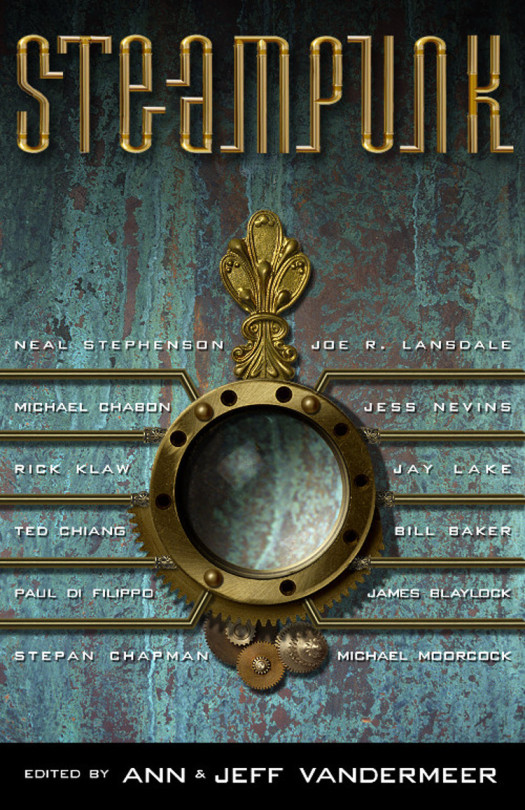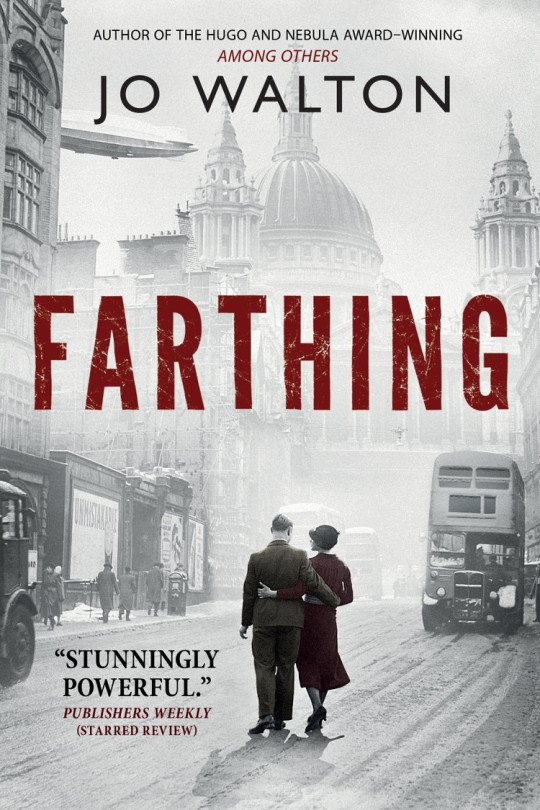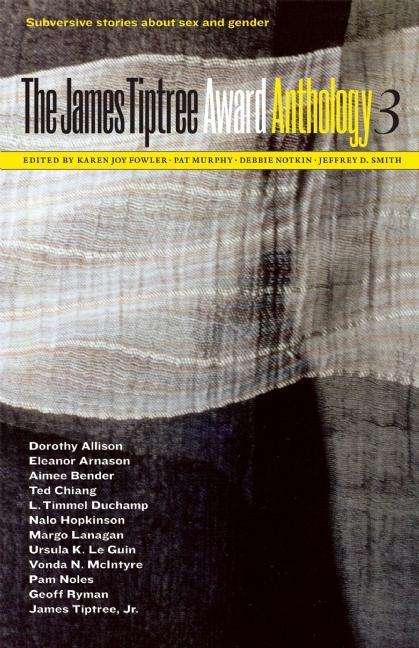Tachyon tidbits featuring Ann & Jeff VanderMeer, Jo Walton, and the James Tiptree, Jr. Award
The latest reviews and mentions of Tachyon titles and authors from around the web.

Ann & Jeff VanderMeer (photo: Richard Klienik/Los Angeles Times) and Jo Walton (Ada Palmer)
For DIFFERENCE BETWEEN, Sagar Khillar explains the difference between cyberpunk and steampunk. The article cites Ann & Jeff VanderMeer’s now-seminal anthology STEAMPUNK.
Both Cyberpunk and Steampunk are captivating sub-genres within the world of science fiction and are related to technology and advances in technology, they’re actually worlds apart.
While both are popular alternative styles with similar futuristic elements rooted in the world of fiction, the difference lies in the discipline and where they take their inspiration from. Cyberpunk is a style set much further into the future, something that spring from the modern age of the Internet, whereas Steampunk is way more aesthetically pleasing but with a historical setting and mainly focuses on a Victorian inspired look.
Steampunk combines historical elements with old-school technological features inspired by science fiction, whereas Cyberpunk is a futuristic world dominated by computer technology. We look at the differences between the two.

Jeff Somers at B&N SCI-FI & FANTASY BLOG includes Jo Walton’s Farthing among 10 Sci-Fi & Fantasy Books That Twist the History of World War II.
Walton imagines a world where Great Britain made a shameful peace with Germany in 1941 in order to save itself, leaving Europe—and its Jewish population—undefended. Eight years later, many of the elite who brokered the deal gather at the country estate of Farthing, where the main negotiator, Sir James Thirkie, is murdered—stabbed in the chest with a yellow star pinned to him. Walton’s murder mystery is tense and well-told, but the true story is the portrait of a declining England, stained by fascism and sliding further into darkness. The two sequels, Ha’Penny and Half a Crown, go deeper into this dark world—and what’s truly disturbing is how plausible they seem.

On GALAXIS CONFLITO E
INTRIGA NO SÉCULO 25, Brazilian author Roberto de Sousa Causo praises THE JAMES TIPTREE AWARD ANTHOLOGY 3, edited by Karen Joy Fowler, Pat Murphy, Debbie Notkin, and Jeffrey D. Smith.
The book combines science fiction and fantasy stories, non-fiction texts and lists with prize results over the years (it was founded in 1991). The stories are winners or finalists of the award. But one of the texts that touched me most was just an essay: “Shame,” by Pam Noles, on the issue of HR and fantasy representation, written before the question became decisive, in recent years. Noles, an African American, recalls with great grace, how she finally found characters of color in the fantasy series Terramar, by Ursula K. Le Guin. Le Guin herself, who died in 2018, is in the book with the beautiful novel “Mountain Ways” about an idyllic polyamorous community that has its own misadventures. “Have not Have”, by Geoff Ryman, is an excerpt from his celebrated novel Air (2006), and deals with a woman who lives in a village in “Karzistan” and whose business is to guide visits to shopping centers with other women to organize weddings. In the process, it functions as a pillar of the community, caring for the village people in various ways. But everything is threatened by a technological innovation that will get people to get the internet right in their heads. Ryman is the leader of the Mundane-SF movement, and his text here is a good example of this current.

As the award honors Alice B. Sheldon’s pseudonym, “James Tiptree, Jr.,” the anthology brings “Dear Alice Sheldon” by L. Timmel Duchamp, a nonfiction text that explores, in an epistolary structure, the characteristics of the author’s fiction. And also the pioneering and award-winning pre- cyberpunk novelet “The Girl Who Was Plugged In” (1973), intriguing and violent half- beatnik narrativeabout a physically deformed but romantic-minded young woman who gets an extreme makeover by the science of an advertising company that manufactures her as an international jet-set figure that promotes her products and trends. The narrative, very ironic and sometimes nonsense, while denouncing the fabrication of female images, describes the heroine as out of character and delivered to her daydreams, remotely controlled by computers. It is thus a feminist position that is based on the critique of the stereotype and the frivolous and unenlightened feminine behavior, which is very present even in American postmodern fiction. I wonder if this perspective would have any future in Brazil in times of demand for positive portraits of the woman, and with a readership with great difficulties to understand irony.
(Translation from Portuguese, courtesy of Google.)
For more info about STEAMPUNK, visit the Tachyon page.
Cover by Ann Monn
For more info about THE JAMES TIPTREE AWARD ANTHOLOGY 3, visit the Tachyon page.
Cover by John D. Berry
